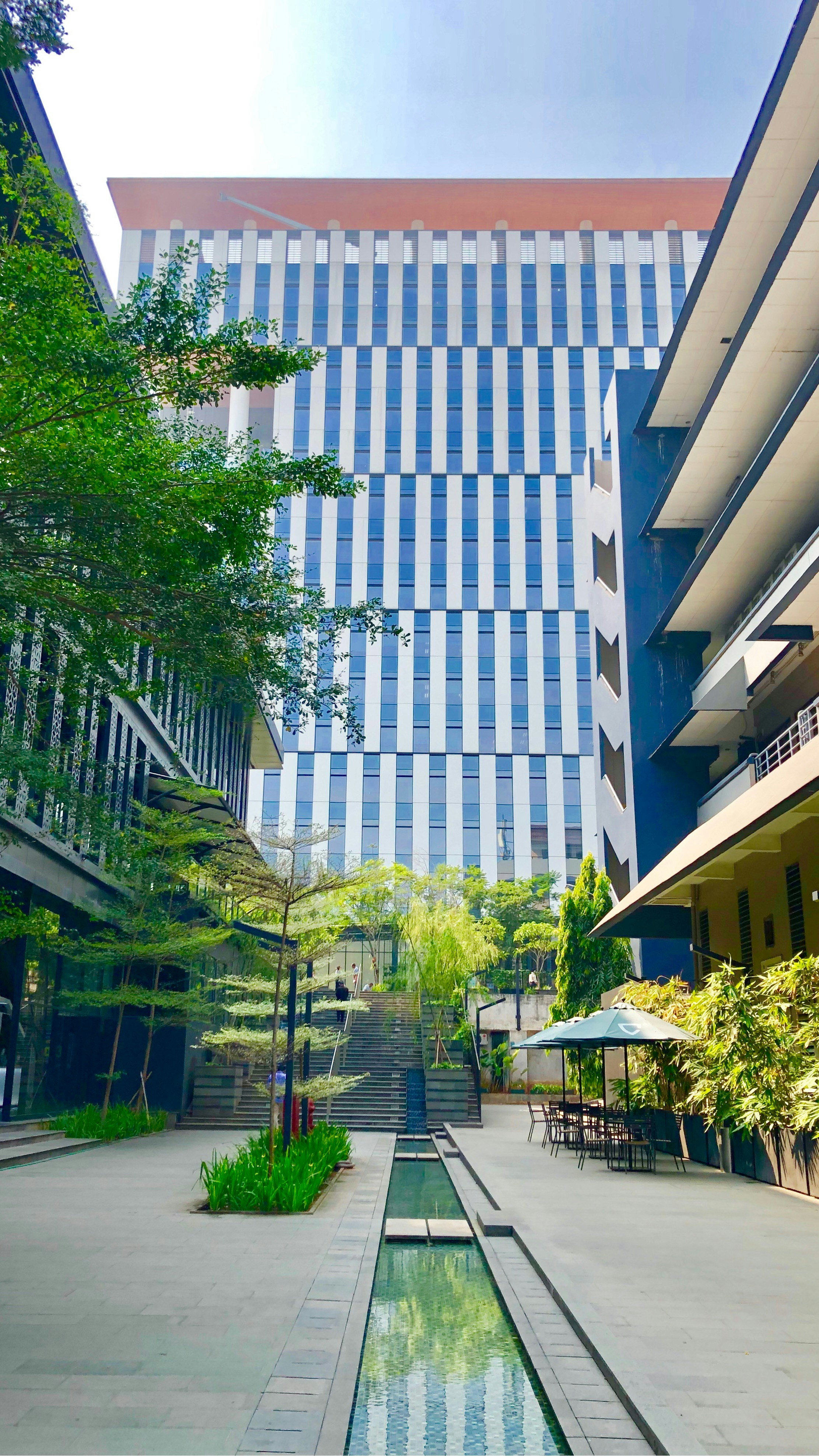Planning for Every Season: Strategic Landscaping for Commercial Properties
Planning for Every Season: Strategic Landscaping for Commercial Properties


Commercial landscapes are living assets that shift with the seasons. In regions like the Midwest, where temperature extremes and weather variability can be intense, effective seasonal landscaping is a critical part of property management. It impacts everything from curb appeal and safety to infrastructure longevity and budget planning.
This guide outlines how to plan and manage landscaping across all four seasons to ensure consistent performance and visual quality.
Spring: Recovery and Preparation
After winter, spring is the time to assess damage and restore plant health. Common tasks include:
Site Inspection: Evaluate turf conditions, hardscape damage, drainage, and plant dieback.
Debris Removal: Clear winter debris, including salt buildup, broken branches, and leftover leaves.
Soil Testing and Fertilization: Test soil pH and nutrient levels, then apply the correct fertilizer to support new growth.
Irrigation Startup: Check system integrity and ensure even coverage before the growing season begins.
Mulching: Apply fresh mulch to control weeds and maintain soil moisture as temperatures rise.
Summer: Sustaining Health Under Stress
Hot temperatures, drought potential, and increased foot traffic all place stress on landscapes in summer. Key actions include:
Efficient Irrigation: Use smart controllers and soil moisture sensors to optimize watering.
Turf Management: Adjust mowing height to prevent stress and encourage deeper root growth.
Weed and Pest Control: Stay ahead of invasive species and insects that thrive in summer conditions.
Pruning and Deadheading: Keep shrubs and perennials healthy and looking clean.
Fall: Preparation and Protection
Autumn is critical for setting up success in spring. Focus on fortifying the landscape before winter sets in:
Aeration and Overseeding: Relieve soil compaction and promote thicker turf.
Leaf Management: Regular removal reduces slip hazards and prevents turf suffocation.
Fertilization: Apply a final round of slow-release fertilizer to strengthen roots.
Planting: Fall is ideal for installing trees and perennials thanks to cooler temperatures and adequate soil moisture.
Winter: Protection and Safety
While plant growth slows, the focus shifts to protecting the landscape and ensuring site safety:
Snow and Ice Management: Keep walkways, loading zones, and entrances clear without damaging turf or hardscapes.
Tree Assessments: Heavy snow and wind can damage trees. Identify weak limbs or structural issues early.
Infrastructure Checks: Monitor retaining walls, drainage systems, and lighting for damage or wear.
Planning Ahead: Winter is a valuable time to review contracts, assess vendor performance, and plan for next season.
Final Notes
Seasonal landscaping is about anticipating needs and maintaining continuity. A proactive, season-by-season approach protects your investment, supports tenant satisfaction, and reduces long-term maintenance costs. With a reliable strategy in place, commercial properties can remain visually consistent, functionally safe, and environmentally resilient throughout the year.

LOOKING FOR EXPERT HELP ON YOUR NEXT PROJECT?
Our team has a combined 40+ years experience transforming commercial and residential spaces.
Commercial landscapes are living assets that shift with the seasons. In regions like the Midwest, where temperature extremes and weather variability can be intense, effective seasonal landscaping is a critical part of property management. It impacts everything from curb appeal and safety to infrastructure longevity and budget planning.
This guide outlines how to plan and manage landscaping across all four seasons to ensure consistent performance and visual quality.
Spring: Recovery and Preparation
After winter, spring is the time to assess damage and restore plant health. Common tasks include:
Site Inspection: Evaluate turf conditions, hardscape damage, drainage, and plant dieback.
Debris Removal: Clear winter debris, including salt buildup, broken branches, and leftover leaves.
Soil Testing and Fertilization: Test soil pH and nutrient levels, then apply the correct fertilizer to support new growth.
Irrigation Startup: Check system integrity and ensure even coverage before the growing season begins.
Mulching: Apply fresh mulch to control weeds and maintain soil moisture as temperatures rise.
Summer: Sustaining Health Under Stress
Hot temperatures, drought potential, and increased foot traffic all place stress on landscapes in summer. Key actions include:
Efficient Irrigation: Use smart controllers and soil moisture sensors to optimize watering.
Turf Management: Adjust mowing height to prevent stress and encourage deeper root growth.
Weed and Pest Control: Stay ahead of invasive species and insects that thrive in summer conditions.
Pruning and Deadheading: Keep shrubs and perennials healthy and looking clean.
Fall: Preparation and Protection
Autumn is critical for setting up success in spring. Focus on fortifying the landscape before winter sets in:
Aeration and Overseeding: Relieve soil compaction and promote thicker turf.
Leaf Management: Regular removal reduces slip hazards and prevents turf suffocation.
Fertilization: Apply a final round of slow-release fertilizer to strengthen roots.
Planting: Fall is ideal for installing trees and perennials thanks to cooler temperatures and adequate soil moisture.
Winter: Protection and Safety
While plant growth slows, the focus shifts to protecting the landscape and ensuring site safety:
Snow and Ice Management: Keep walkways, loading zones, and entrances clear without damaging turf or hardscapes.
Tree Assessments: Heavy snow and wind can damage trees. Identify weak limbs or structural issues early.
Infrastructure Checks: Monitor retaining walls, drainage systems, and lighting for damage or wear.
Planning Ahead: Winter is a valuable time to review contracts, assess vendor performance, and plan for next season.
Final Notes
Seasonal landscaping is about anticipating needs and maintaining continuity. A proactive, season-by-season approach protects your investment, supports tenant satisfaction, and reduces long-term maintenance costs. With a reliable strategy in place, commercial properties can remain visually consistent, functionally safe, and environmentally resilient throughout the year.

LOOKING FOR EXPERT HELP ON YOUR NEXT PROJECT?
Our team has a combined 40+ years experience transforming commercial and residential spaces.

